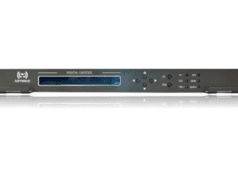
The end of the decade is upon us and time to take a look at how the last 10 years impacted broadcasters. As usual, it’s a mixed bag of successes and a few failures, illustrating the rocky path for our industry as we transition from television as we knew it to a whole new paradigm.
In 2010, I acquired my first streaming box and talked about it in these pages. At the time, I referred to my second-generation Apple TV box as an “IPTV” box—a quaint reference a decade later. Back then, I would classify my opinion as “cautious optimism,” calling Apple TV’s biggest attraction its price, easy setup and user interface. I don’t think there’s any question about how the Apple TV box ushered in a revolution of OTT and streaming services that not only influenced how we watched but what we watched. The mobility of television—prompted by the influx of more powerful devices, faster connections and more efficient compression—was perhaps the biggest jump in television technology during the decade.
The desire for the “next big thing” however, led us down several precarious paths. After HDTV had taken hold in the last half of the previous decade, programmers and manufacturers needed a hook to increase interest and the bottom line. At that point, we hooked our star to 3D, which came and went in a flash. Even though the concept had been around for decades, we seemed to think that high-resolution displays and better production technology would spur new interest among consumers. But in the end, it was unrealistic expectations hampered by what has been 3D’s Achilles heel since its inception: the need to wear glasses, lack of content and the limited viewing angles.










